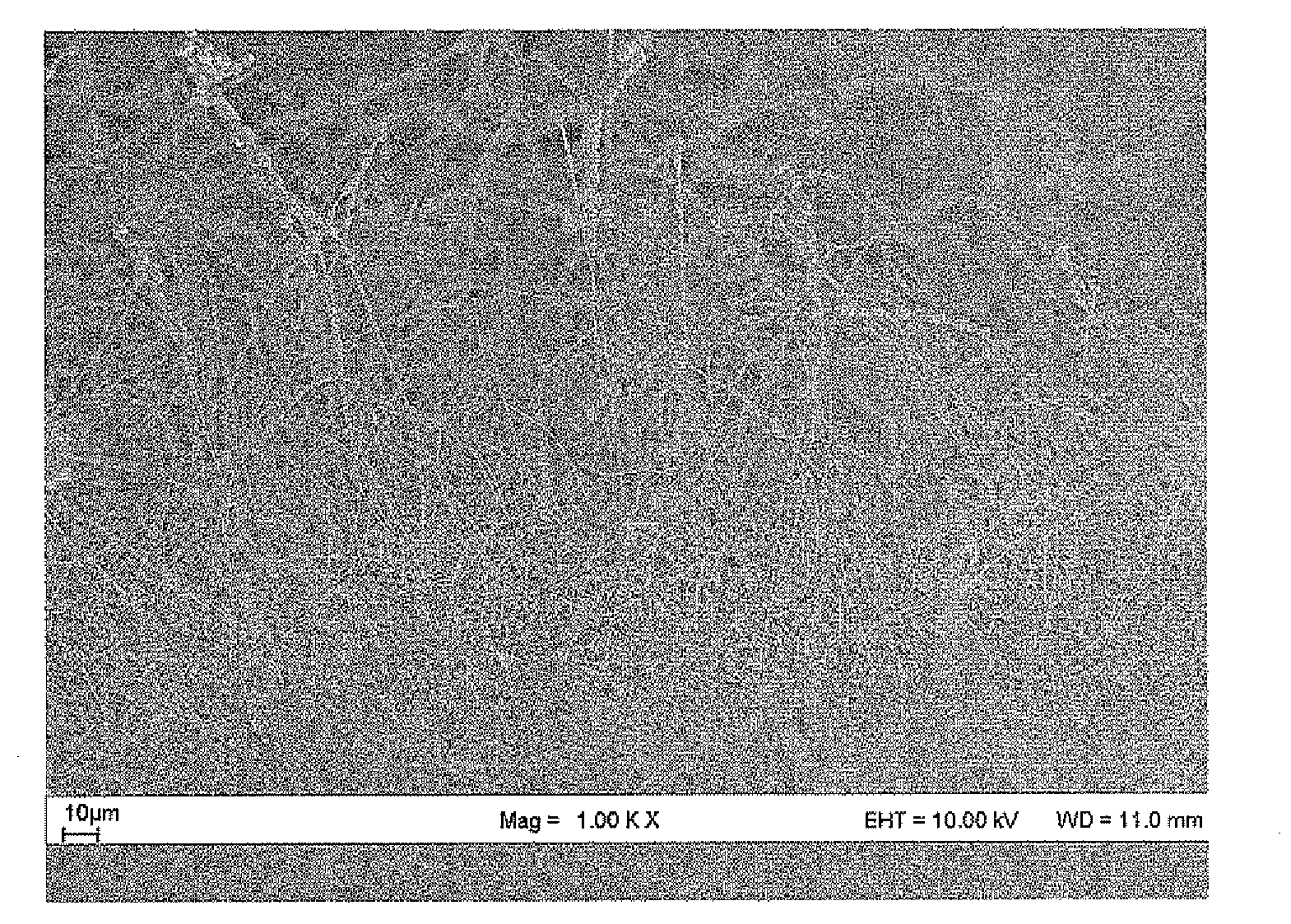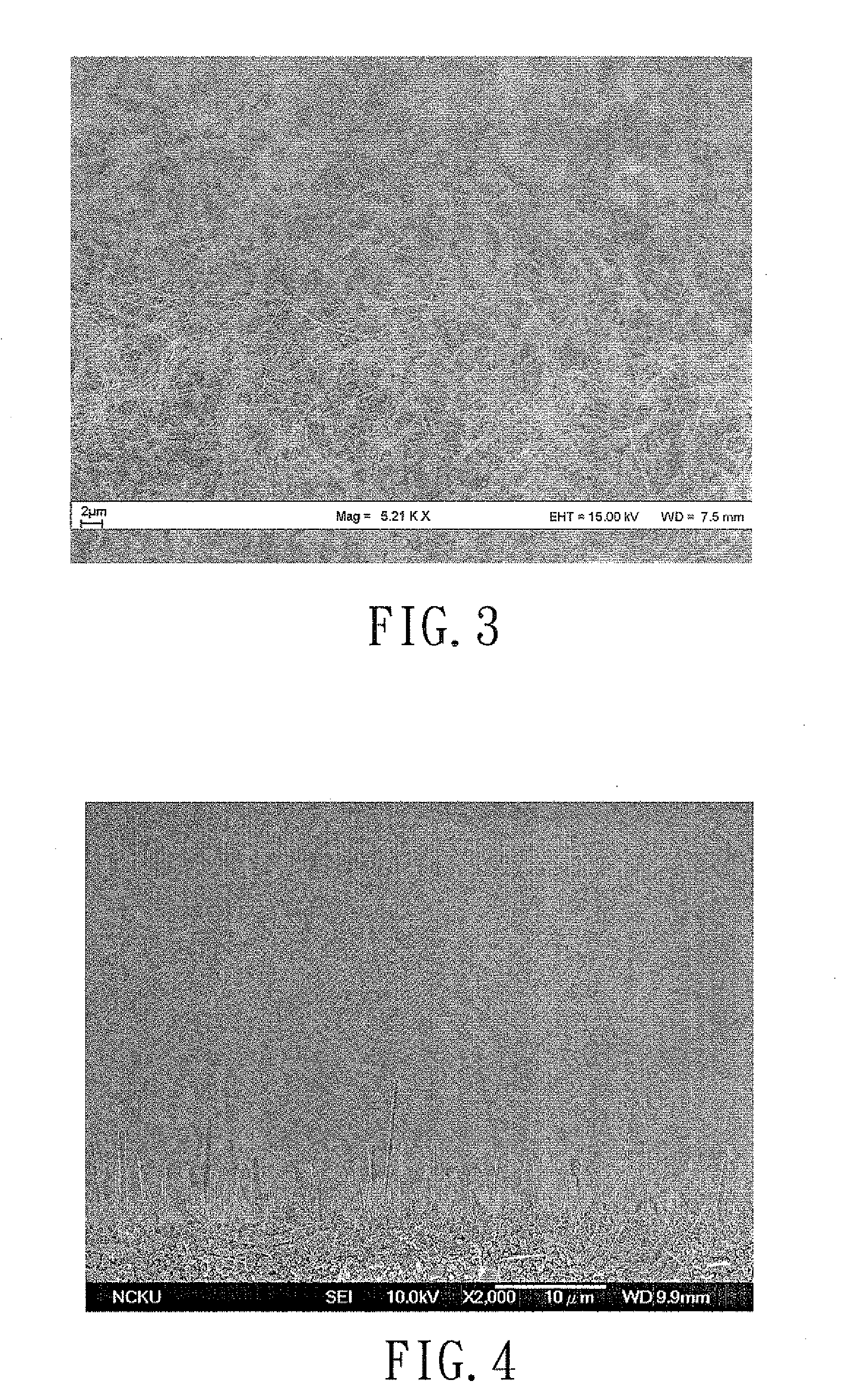Method for forming metallic nanowires
a technology of metallic nanowires and nanowires, which is applied in the direction of polycrystalline material growth, crystal growth process, chemical coating, etc., can solve the problems of low yield of metallic nanowires, limited number and length of metallic nanowires thus formed, and high cost of template materials, etc., to achieve the effect of reducing metal
- Summary
- Abstract
- Description
- Claims
- Application Information
AI Technical Summary
Benefits of technology
Problems solved by technology
Method used
Image
Examples
example 1
[0028]The metallic nanowires of Example 1 were prepared by the following steps.
[0029]A Si substrate was placed inside a magnetron sputtering system. A feed gas including argon and oxygen was introduced into the system at a 3:7 flow rate ratio to maintain a working pressure of 1.59×10−2 torr. After applying an output power of 300 W on a Ti target in the magnetron sputtering system, a TiO2 film was formed on the Si substrate. Subsequently, the TiO2 film was heated to a working temperature of 500° C. for 8 hours at a raising rate of 5° C. / min so as to obtain a crystal form of anatase of TiO2 film on the Si substrate. After applying about 15 μL of 0.1 M CuCl2 solution on a 1 cm2 area of the TiO2 film thus formed, the TiO2 film was placed in an oven, and was disposed such that the same faced downwardly. The oven was heated to a working temperature of 300° C. for 2 hours at a raising rate of 5° C. / min. Cu nanowires formed on the TiO2 film were obtained and had an average width of about ...
example 2
[0031]The metallic nanowires of Example 2 were prepared according to steps similar to those of Example 1, except that this example further utilized a second Si substrate formed with a TiO2 layer thereon. In this example, after application of the metal salt solution on the first Si substrate, two spacers made from quartz and having a height of about 2 mm were disposed on the first Si substrate, and the second Si substrate was then disposed on the spacers such that the TiO2 layers of the first and second substrates faced toward each other, thereby confining and spreading the metal salt solution therebetween.
[0032]FIG. 3 is a scanning electron microscope (SEM) image showing the Cu nanowires at 5210× magnification. The Cu nanowires thus formed had an average width of about 100 nm and an average length of about hundreds of micrometers.
example 3
[0033]The metallic nanowires of Example 3 were prepared according to steps similar to those of Example 2, except that the metal salt solution is AgNO3 solution.
[0034]FIGS. 4 and 5 are scanning electron microscope (SEM) images showing the Ag nanowires at 2000× and 5000× magnification, respectively. The Ag nanowires thus formed had an average width of about 100 nm and an average length of about tens of micrometers.
PUM
| Property | Measurement | Unit |
|---|---|---|
| distance | aaaaa | aaaaa |
| temperature | aaaaa | aaaaa |
| diameter | aaaaa | aaaaa |
Abstract
Description
Claims
Application Information
 Login to View More
Login to View More - R&D
- Intellectual Property
- Life Sciences
- Materials
- Tech Scout
- Unparalleled Data Quality
- Higher Quality Content
- 60% Fewer Hallucinations
Browse by: Latest US Patents, China's latest patents, Technical Efficacy Thesaurus, Application Domain, Technology Topic, Popular Technical Reports.
© 2025 PatSnap. All rights reserved.Legal|Privacy policy|Modern Slavery Act Transparency Statement|Sitemap|About US| Contact US: help@patsnap.com



